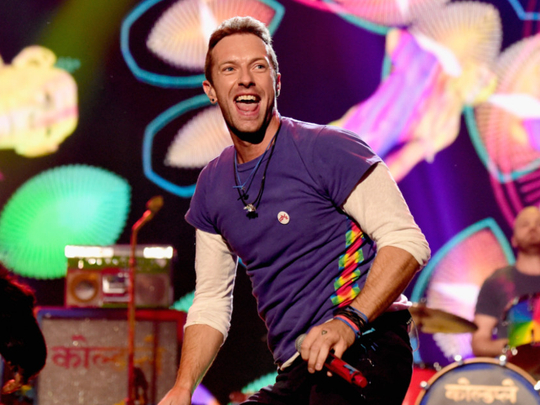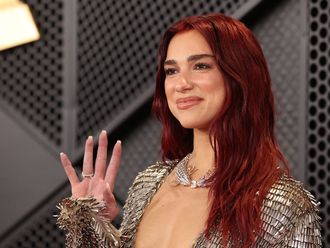
When half-time arrives at Levi’s Stadium in Santa Clara, California, on Sunday, the now wildly popular entertainment extravaganza that follows will have a different feel, and not just because it is the 50th anniversary of the Super Bowl. The show will also be held in broad daylight.
Dramatic lighting and pyrotechnics have become synonymous with recent Super Bowl half-time shows, and the absence of a dark sky or a dimly lighted stadium as a backdrop presented a big challenge for the event’s organisers, who start planning the show more than a year in advance.
“Something has to replace those elements — I can’t say what — but we knew we had to do something,” said Mark Quenzel, the senior vice-president for programming and production at NFL Network, which produces the pregame and half-time shows. “Have we found the solution? I sure hope so.”
He continued: “I don’t want to say it’s going to be the best ever because that’s not really fair to the Katy Perrys and the Madonnas of the world. But it’s going to be different, for sure, in a lot of respects.”
For as big as the half-time show has become over the years, growing from intimate performances by marching bands to elaborate collaborations among some of the most popular artists in the world, the team that dreams it all up is relatively small. Quenzel and two NFL staff members, plus producer Ricky Kirshner and director Hamish Hamilton, are continually adding to a list of performers they would like to perform and keeping tabs on those artists’ tour dates and commitments.
If an artist’s schedule appears to be open for about four months leading to the Super Bowl, the team begins negotiating with the artists and usually has a deal in place by the fall.
The NFL, which pays for the show along with a sponsor (this is Pepsi’s fourth consecutive year in the role), would not say how much it costs, saying only “a lot.” The artists often chip in, paying for rehearsal space and for extra pizzazz.
“There’s a certain amount we can spend on Super Bowl half-time, and if they want to do more than that, then at some point, they have to pay,” Quenzel said.
While some artists have turned down the offer for logistical reasons, rejection is rare because of the platform the show provides. More than 118.5 million viewers tuned in to last year’s show, which was headlined by Perry, making it the most-watched television program in US history.
Chris Martin, the lead singer of Coldplay, joked during a news conference on Thursday about the honour of headlining this year’s Super Bowl half-time show. “We started in Iowa campaigning three years ago,” he said.
Special guests, usually suggested by the main act, are added to the show to reach a broader audience, and this year, because it is Super Bowl 50 and the team wanted the show to rise to the occasion, the planning process stretched well into December.
“People ask me, ‘Who are you trying to reach?’” said Quenzel, who is overseeing his sixth half-time show. “At 120 million people, it’s everyone from eight to 80. It’s also the goal, we hope, that Super Bowl half-time, besides whatever other attributes it has, it has become known a little bit to put together artists and looks and concepts that you don’t see every day.”
Secrecy is also of utmost importance, and employees and volunteers must sign confidentiality agreements. Coldplay was announced by the NFL as the main act in early December, and an appearance by Beyonce was confirmed Thursday. Bruno Mars is among those rumoured to be joining them.
“There’s people in the stadium during rehearsals,” said Frank Supovitz, a former NFL senior vice-president for events and entertainment who runs his own event management and consulting business. “You try to keep it down to a minimum number of people for both security purposes and also so you’re not finding secrets on Twitter, but it’s really hard.”
Another challenge is timing. The stages need to be set up in less than eight minutes, the performance lasts about 12 minutes, and everything needs to be cleared from the field in seven minutes. Only then are the teams allowed back on the field. A few times, like when Beyonce performed in New Orleans for the Super Bowl in 2013, the shows have run long and the half-time clock, which is extended to 30 minutes for the Super Bowl from the standard 12 minutes, needed to be stopped.
“What’s important is that you have to direct traffic,” Supovitz said. “You can’t have tons of staging coming up the tunnel at the same time as the players are coming on the field. You don’t want those two things to mix because it’s just dangerous.”
Keeping the field in top shape for the second half is a priority. Quenzel’s team is in constant discussion with the league’s groundskeepers. Many times, ideas have been quashed before they can even get off the ground.
Several NFL officials held their breath last year when Perry made a grand entrance into the University of Phoenix Stadium on a giant mechanical lion. There were about 800 people on the field for her show, all wearing ballet slippers to keep the natural grass vibrant.
“We can’t do anything that would negatively affect the game,” Quenzel said, noting the natural grass at Levi’s Stadium. “And that guides a lot of decisions we make about who comes on the field, who goes off the field, what kinds of things do we do.
“That’s the biggest thing that people probably don’t realise is that we have to be respectful of the fact that we’re really in an odd way the sideshow if you want to call it that.”
Compared with the Super Bowl in 1988, when Chubby Checker performed in San Diego with 44 Rockettes and 88 grand pianos pulled onto the field by John Deere tractors, the lion seems tame. In fact, the head groundskeeper at the time, George Toma, was so worried about the grass that he made the performers rehearse in socks.
“We provided everyone with the same all white adidas sneakers,” said Supovitz, who worked for Radio City Music Hall, where the Rockettes are based, at the time and was the associate producer of the show. “So it was hilarious at the end of the rehearsal for 1,400 people to go out and try to find a left and a right of the correct size out of 2,800 sneakers sitting in the chute out to the field. That’s just some of the goofy stuff that happens.”
For the first outdoor cold-weather Super Bowl, at MetLife Stadium in New Jersey in 2014, organisers had to worry about the possibility of ice and snow on the field, so the planning started two years in advance. The solution was to stage the show off the field, near a team bench.
For indoor stadiums, pyrotechnics must be practised in advance because of the smoke they create. “You want people to be able to actually see the second half,” Supovitz said.
Other notable occurrences, of course, were Janet Jackson’s wardrobe malfunction in Houston in 2004 and the blackout that happened just after half-time in 2013.
“We’re not obsessed by it, but we think about it for sure,” Quenzel said of Jackson’s brief display of nudity. “If something similar happened as the wardrobe malfunction it would be a big deal. Whatever we do has to be in line with and enhance the NFL’s brand.”
The blackout is another story. It is a common theory that Beyonce caused the blackout, but that is not true, Supovitz said. Beyonce’s show ran on its own generators, but when the lights were turned back on in the Superdome, the computer that monitors how much power is being consumed saw an aberration and shut down all the power.
“It was like a giant circuit breaker, and it just flipped off,” he said. “So the spectacle of Beyonce, as great as she was, did not create the blackout.”
In daylight on Sunday, organisers will not have to worry about flipping the power back on. They will merely be hoping for another memorable spectacle that stands on its own.













